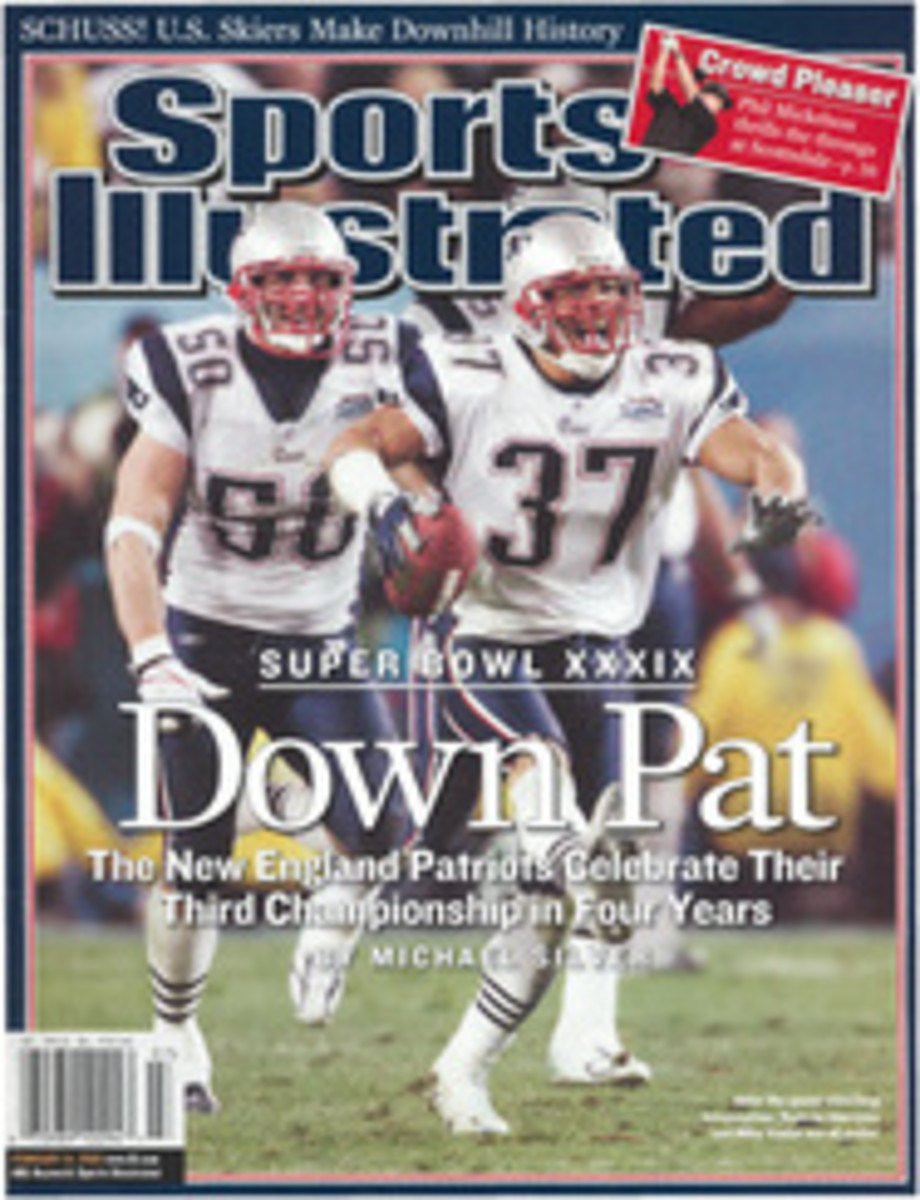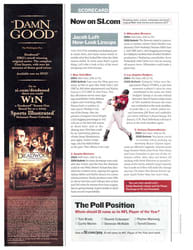
Hell on Wheels
From the red goatee to the wraparound tattoo on his left shin to the "hit me, I'll hit you back" attitude, Mark Zupan seems as invincible as any elite athlete in a full-contact sport. He dates a model-beautiful woman, conducts a shirtless interview in the weight room where he cuts his lean upper body for 10 to 13 hours a week and earned a medal in Athens. There is one difference, however, and it's obvious in the first scene of Murderball, one of the hits of the 2005 Sundance Film Festival.
In the opening frames Zupan, 29, expends considerable effort just to put on his pants. It's not sad; it's life. He's a quadriplegic--and one of the world's best in quad rugby: bone-jarring, four-on-four combat played in tricked-out wheelchairs by athletes who are at least partially impaired in all four limbs. The game requires a player to capture a ball and maneuver through a tangle of bodies and dented wheels to cross a goal line. Murderball codirector Dana Adam Shapiro (who is able-bodied) says it feels like "being in a shopping cart and smashing into a wall."
But to players like Zupan and top coaches like Joe Soares--who screams from his chair, red-faced and cursing--the brutally competitive sport, full of head-on collisions, allows them to be who they once were, or who they might have become before the moment their lives changed irreversibly. For Zupan, that moment occurred 12 years ago. He was riding in a truck driven by his best friend, Chris Igoe, when Igoe lost control and the truck veered into a canal. Zupan suffered a broken neck and spent 13 hours in the waterlogged ditch, clinging to a branch. After the accident Zupan asked for no pity and gave none. In the film high school classmates say he was "very much [a jerk] before the accident" and agree that he's the same today.
Soares, 45, is equally obstinate, and just as talented. Crippled by polio as a child, he played wheelchair basketball before a quad-rugby scout recruited him in 1989. For more than a decade Soares was the sport's dominant player, and the U.S. was the world's dominant team. When the brash Zupan came along in 1996, he and Soares immediately clashed. After Soares was cut, unfairly he felt, from the U.S. team in 2000, he rebelled by signing on to coach Canada, taking the playbook with him. As filming for Murderball began in '02, Soares was in the midst of guiding Canada from No. 4 in the world to No. 1. Zupan didn't miss him. "If Joe was on the side of the road on fire," Zupan says in the film, "I wouldn't p--- on him to put it out."
As in any classic sports story, the rivalry in Murderball plays out at the highest level, in this case the 2004 Paralympics in Athens. During the film, much of it shot from cameras rigged to wheelchairs, Shapiro and codirector Henry Alex Rubin provide an inside look at an honest, rollicking group of athletes and the people who love or despise them--or have no idea what to make of them. There is more laughter than tears, which makes the tearful moments all the more poignant. The filmmakers' success arises from such intimacy, and from the preconceptions they turn inside out.
After one of the Sundance screenings, Igoe was asked by a member of the rapt audience how he deals with having put his best friend in a wheelchair for life. From his response it was clear that he suffers daily. "Coping," Igoe said, "is crippling on a different level."
From his wheelchair Zupan offered a different perspective: "I tell Chris this is probably the best thing that's ever happened to me. Would I change that day? Never." ■
Murderball 101
The basics of quad rugby
Quad rugby, originally called Murderball, is a mishmash of basketball, football, hockey and NASCAR. It's played in four eight-minute quarters on a basketball court and features four athletes per team dribbling and passing a regulation volleyball past a goal line. Players are strapped into their wheelchairs, which are heavier than those designed for everyday use and have sharply tilted wheels for added stability. There are power plays, penalty boxes--and plenty of crashes, requiring quick repairs from pit crews. To prevent a team from stacking its highest-functioning players on the court at once, each player is classified from .5 (the most impaired) to 3.5 (the most able); the four-man squad on the court may not exceed 8.0. The game was developed in Canada in the 1970s, came to the U.S. shortly thereafter and was a demonstration sport at the '96 Paralympics in Atlanta. It was officially added to the Paralympic program in 2000. Today it's played in 22 countries and has been called the world's fastest-growing wheelchair sport. --A.B.
COLOR PHOTO
THINKFILM
FORGIVEN
Despite the accident that left him paralyzed, Zupan is still friends with Igoe (inset, far right, with Rubin and Shapiro).
COLOR PHOTO
JEMAL COUNTESS/WIREIMAGE.COM (INSET)
 [See caption above]

